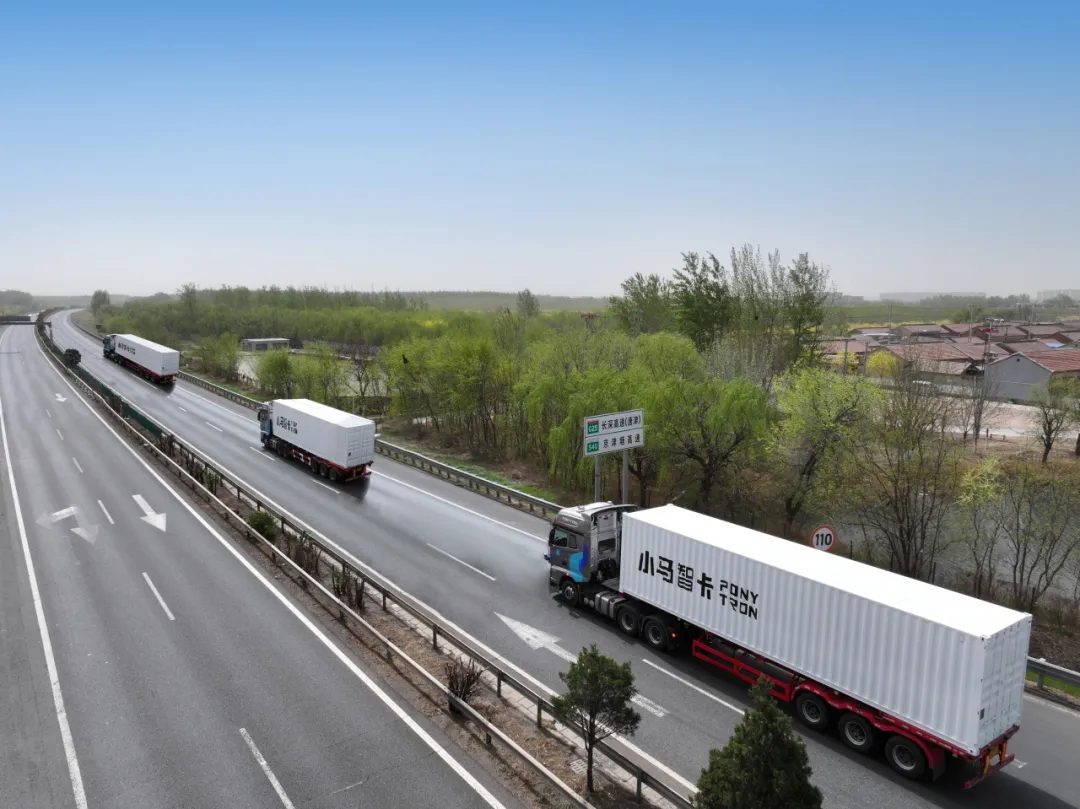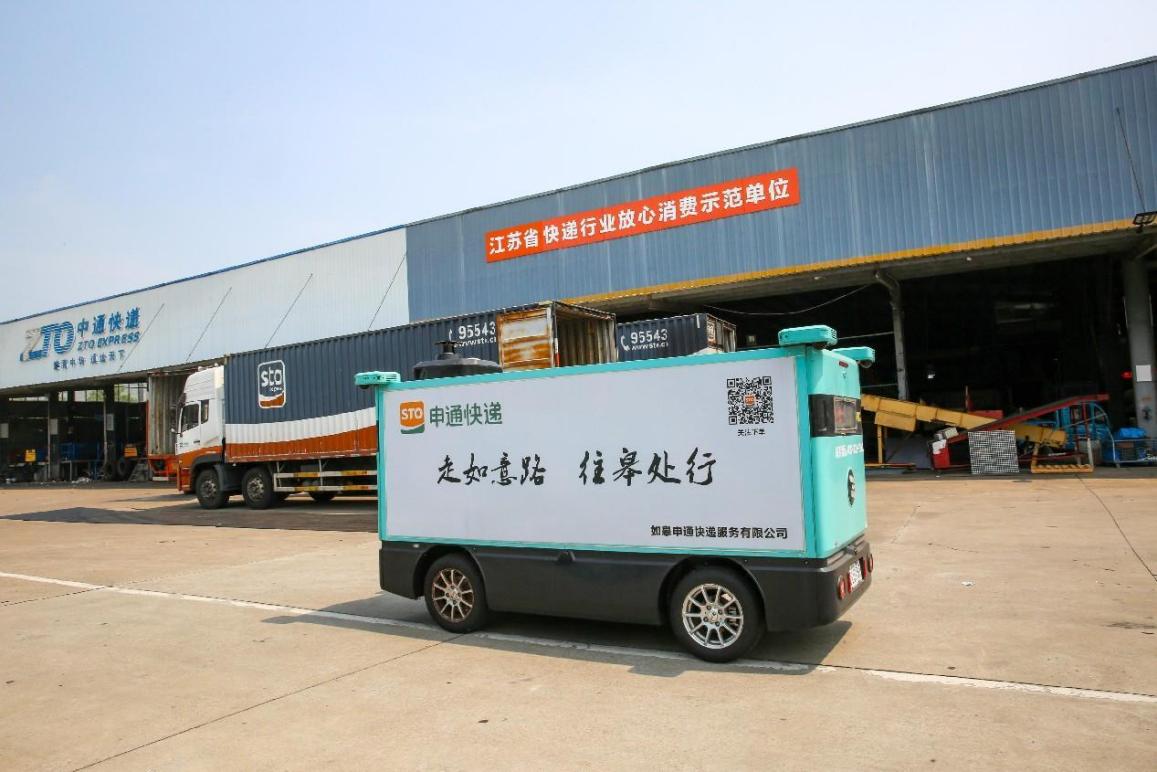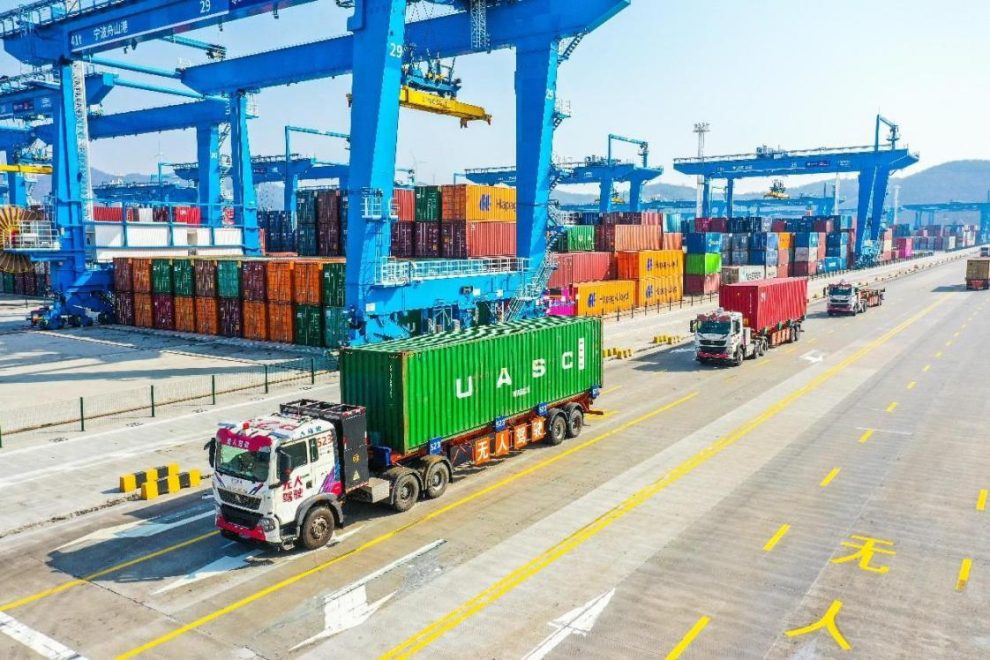By: Yao Xueqing, Han Xin, People’s Daily
Autonomous freight transport is making rapid progress in China as the country continuously improves relevant policies and standards and strengthens pilot and demonstration projects.
Leveraging pilot applications of intelligent transport, China is putting autonomous driving technologies into trial use on a larger scale, focusing on typical freight transport scenarios including road freight, delivery, intra-park transport and port freight services.
Statistics indicate that as of the end of 2023, around 1,000 autonomous driving trucks had been put into operation by over 100 entities joining pilot projects for intelligent transportation applications, and autonomous driving container trucks had been employed at some 20 ports.
On a morning, a red heavy-duty truck, about 16 meters long, was running steadily on the Shanghai-Nanjing Expressway. After passing a toll gate in Suzhou, east China’s Jiangsu province, the driver Sun Yefu activated an intelligent pilot mode. Henceforward, all he needed to do was to sit on the driver’s seat and watch, as the truck would automatically drive, avoid obstacles or switch lanes according to actual traffic.
“The driver’s compartment of the heavy-duty truck is equipped with multiple types of sensors, including millimeter wave radars, laser radars and high-definition cameras. They serve as the ‘eyes’ of the truck that enable it to see traffic hundreds of meters ahead,” said Cui Dixiao, chief scientist of Smartxtruck, a developer of autonomous driving solutions headquartered in Suzhou.

A truck equipped with autonomous driving system developed by Pony.ai runs on the Beijing-Tianjin-Tanggu Expressway. (Photo from the official website of Pony.ai)
According to Cui, the heavy-duty truck’s multi-sensing capabilities allow it to be resilient even in heavy rain and fog. It can detect traffic congestion in advance and adjust its speed accordingly, ensuring a steady drive while saving fuel.
Last year, in collaboration with Chinese automaker JAC Group, Smartxtruck tailored an intelligent heavy-duty truck model for the courier industry. So far, the model has been employed by logistics companies in the Yangtze River delta, Pearl River delta and Beijing-Tianjin-Hebei region. No accident has been reported, and the model saves as much as 10 percent of fuel.
At the Nantong port in east China’s Jiangsu province, five autonomous driving container trucks were working in an orderly manner in an enclosed operation area. They drove to a designated spot along a planned route and docked with a gantry crane. Later, the crane lifted containers and put them on the trucks’ trailers.
It is the first fleet of autonomous driving container trucks in Jiangsu province. “In the past, it took a lot of time and energy for drivers to get this job done, but now, with the intelligent trucks, the error can be controlled within five centimeters,” said Jiang Haozhou, an employee at the port.
Jiang said that with technological advancements, the emergence of truly unmanned and intelligent transport equipment has become possible. Not only are they more flexible and intelligent, but they also do not require infrastructure modifications at the docks, which makes them suitable for over 95 percent of traditional docks across China. This upgrade in freight transportation methods will elevate the industry to a new level.

An unmanned express delivery vehicle of a logistics center in Chengnan neighborhood, Rugao, east China’s Jiangsu province departs for rural dispatching stations. (Photo by Xu Hui/People’s Daily Online)
On an open road in the Wuxi New District Free Trade Zone, Jiangsu province, a modified autonomous logistics vehicle was carrying 10 tons of raw materials and components, on its way from a bonded warehouse of Jiangsu JD-Link International Logistics Co., Ltd. to a warehouse of a U.S.-funded enterprise in the free trade zone.
Safety inspector Xu Hongming told People’s Daily that guided by high-definition maps and an intelligent driving system, the vehicle could automatically start, accelerate, switch lanes, and park. Since the vehicle was put into use last September, there has been no chance that Xu needs to intervene in the truck’s operation.
After the vehicle entered its destination warehouse, it parked in front of a platform 1.3 meters above the ground. A self-driving forklift directly entered the cargo tank, unloaded the cargo, and moved it onto a conveyor belt. The automated conveyor belt then sorted the cargo and placed it on a shelf.
Qian Shaohua, head of an innovation research institute of Jiangsu JD-Link International Logistics Co., Ltd., told People’s Daily that the route in this scenario is simple and fixed, making it ideal for autonomous driving.
This technology enables 24/7 real-time response for precise deliveries, facilitating seamless integration and deep collaboration between the logistics and manufacturing industries. It enables small-batch, high-frequency, and customized flexible production, which is shaping the future of manufacturing as it continues to transform and upgrade, Qian added.












